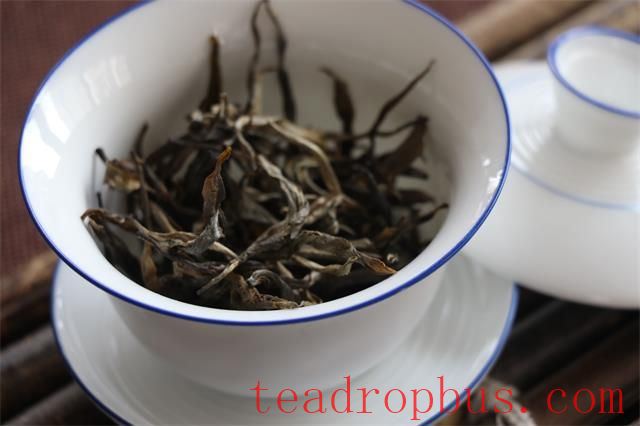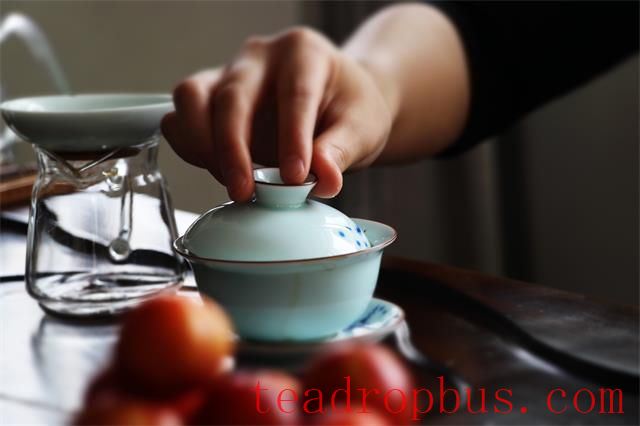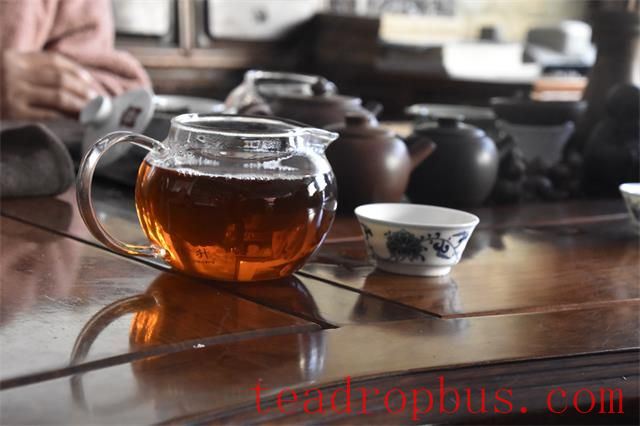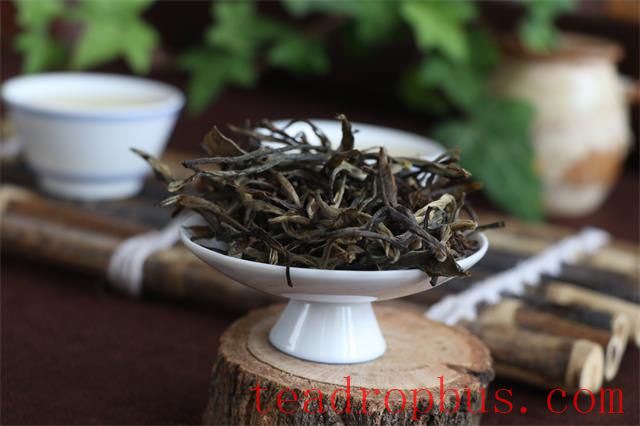The fresh and refreshing raw Pu'er; the rich and full ripe Pu'er; the aged and profound old teas;
The various transformations of mid-aged teas; the wild character of ancient tree teas; the complex layers of blended teas.
Pu'er Tea comes in a variety of types, with significant differences between them. If the brewing method is not right, it can easily result in a taste that is as bland as water or bitter and unpalatable. This has led many tea enthusiasts to lose interest in Pu'er tea after their first attempt due to not mastering the correct brewing methods.
Therefore, if you want to brew delicious Pu'er tea, you need to choose suitable brewing methods based on different types of Pu'er tea.

Brewing Techniques for New Raw Pu'er
The tea nature of new raw Pu'er is somewhat similar to Green Tea. When brewing, you must avoid a “cooked soup flavor,” so the water temperature should be slightly lower, set at 95°C or 90°C; additionally, the pouring technique should be quick and decisive to avoid damaging the tea quality.
The key to brewing new tea lies in grasping its raw material characteristics, such as the tea tree variety, mountain features, and tree age. In principle, for strong-flavored teas like Lao Banzhang, the water temperature can be slightly lower, and the Steeping time shorter. For teas with lighter flavors, the opposite is true. Additionally, beginners must use an appropriate amount of tea when brewing, or else they might experience mild discomfort in the stomach or severe dizziness from oversteeping.
Brewing Techniques for New Ripe Pu'er
In the past when the industry was less mature, newly made ripe Pu'er compared to aged ripe Pu'er had some shortcomings, such as less transparent tea liquor, less pure aroma, and less rich flavor, often accompanied by an unpleasant “pile” flavor.
Therefore, if you are tasting traditional new ripe Pu'er, you should try to highlight its strengths while minimizing its weaknesses. For example, using high-temperature rinsing to remove impurities and pouring quickly, because the water-soluble substances in new ripe Pu'er dissolve relatively fast, the overall brewing pace should also be faster. You can also wait for the tea liquor to cool down slightly before tasting to avoid excessive bitterness and the appearance of a tea liquor resembling soy sauce.
Additionally, with the development of ripe tea fermentation technology, many new processes have emerged, such as off-ground fermentation, small-pile fermentation, wooden box fermentation, ancient tree fermentation, light fermentation, etc. These processes have overcome some of the defects of traditional processes to some extent, adding new categories and types to ripe tea. The specific brewing techniques vary and require analysis of individual teas.

Moreover, whether it's new tea or ripe tea, going through the complete process of brewing and tasting new tea, carefully savoring its transformation from strong to weak to tasteless, can give you a general idea of the tea's potential for aging and its drinking value.
Knowledge Extension: Discussing the Tea Tasting Methods Used by Experts for Middle-Aged and Older Pu'er Teas | Inside the Tea Circle
Brewing Techniques for Aged Pu'er
Aged Pu'er tea, after a long period of storage, releases abundant substances, resulting in a richer flavor and improved durability in brewing. Even after multiple infusions, it still performs excellently. Sometimes, it can even be brewed using steeping or slow cooking.
When brewing aged Pu'er tea, the most important thing to note is the water temperature. Generally, both raw and ripe Pu'er require high-temperature warming and brewing. Relatively speaking, the amount of tea used for aged raw Pu'er should be less than for aged ripe Pu'er, and the water temperature for brewing aged raw Pu'er should be slightly lower than for aged ripe Pu'er.
In terms of choosing tea ware, an iron kettle for boiling water plus a purple clay Teapot for brewing is a good combination. The iron kettle ensures the water reaches boiling point, while the wide-bodied purple clay teapot prevents the tea liquor from becoming too concentrated.
During the long storage period, aged Pu'er tea maintains a relatively anaerobic state. Therefore, before brewing, it needs to be awakened to fully contact the air and revitalize the tea's character. Some aged teas may develop unpleasant odors due to improper storage. We can try to eliminate these through high-temperature rinsing and multiple rinses. Using a purple clay teapot for brewing also helps correct any impurities.
Here is another tip to share: for many aged raw Pu'ers, do not completely cover the leaves during the intervals between infusions but leave some space to allow the leaves to cool slightly, avoiding a damp condition. Interested tea enthusiasts might want to give this a try.

Tightness of the Tea Cake
In general, tightly compressed and heavier teas require a smaller amount of tea and higher water temperature. This is because high water temperatures make the tightly compressed tea blocks expand more quickly, and the dissolved substances in the unfurled leaves will also increase, so the amount of tea used should be relatively less.
Especially for aged raw Pu'er made using the iron cake process, you need to pay attention to controlling the brewing rhythm. You can adopt a brewing rhythm of “slow rinsing, quick pouring,” as well as “loose at first, tight later.” In summary, the finer the tea, the faster its soluble substances dissolve, and the quicker the pouring speed should be.
Fresh Tender Shoots
“Tea spears (tender shoots), being the initial sprouts of the tea strip, have a woodsy nature and a sour taste. If the spear grows too long, the initial sweetness is heavy, but the aftertaste is slightly bitter.” – Song Huizong (Zhao Ji) The Great View Treatise on Tea
Song Huizong's evaluation aptly captures the characteristic of tender shoots having a fresh flavor and fragrant liquor. From a modern tea chemical perspective, the tender shoots are the newly sprouted parts of the plant, where the internal substances have not yet fully developed, so they are rich in amino acids.
Depending on the external temperature, amino acids present three different tastes: sour, fresh, and sweet. If the traditional high-temperature brewing method of Pu'er tea is used, it can easily overcook the tea, destroying the original taste. Therefore, when brewing high-grade tender shoot Pu'er tea, it is best to use a quick pour-in and pour-out technique to keep the tea liquor at a lower temperature, allowing one to fully appreciate the freshness and fragrance of the tea shoots.

True Leaf Aroma
The part of the tea leaf that contributes the most to flavor is academically known as the “true leaf.” Compared to tender shoots, true leaves receive more photosynthesis, develop more fully, and contain more tea polyphenols and caffeine. Most of these internal substances produce a bitter taste and astringency, which gradually transform during aging.
For this high-grade delicate tea, the brewing technique is similar to that of tender shoots. Under the premise of ensuring the tea can fully bloom, the water temperature should be lower. The best tea ware to use is a lid bowl, which allows you to fully experience the fresh and refreshing soup aroma, the salivation-inducing aftertaste, and the lingering charm.
Both the pouring in and pouring out should be done quickly, effectively preventing the excessive extraction of bitterness and astringency from the tea. Since the tea temperature is relatively low, the tea can be consumed immediately after pouring out.
Rich Flavor of Coarse Stems
Tea stems are “older” and primarily composed of plant fibers. They decompose fully at high temperatures, releasing a large amount of sugar and inorganic matter, producing a rich sweetness.
Therefore, Pu'er tea with more stems is suitable for